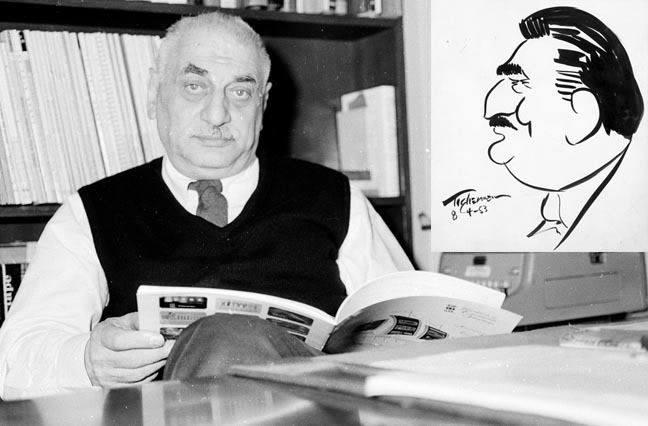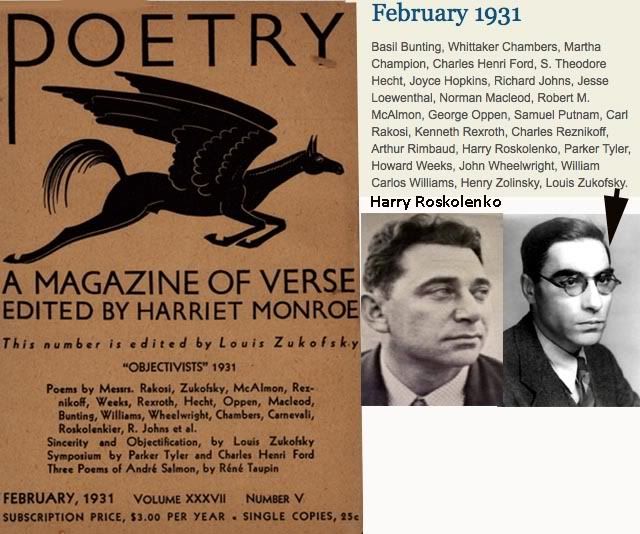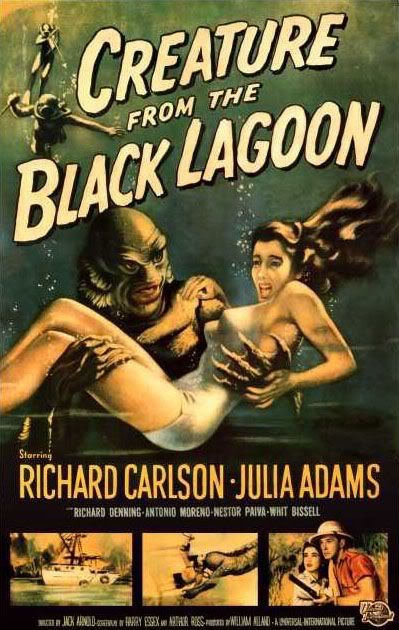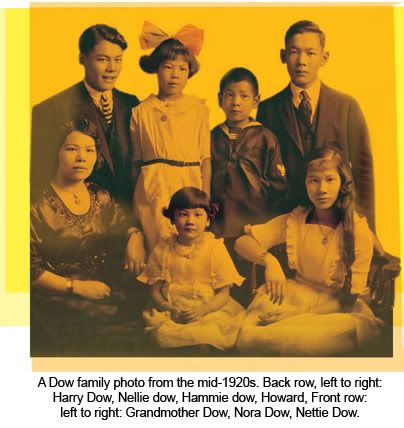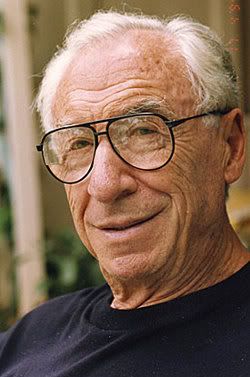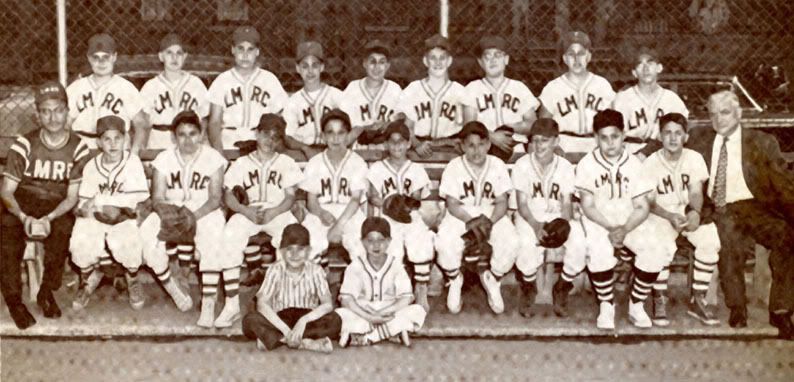Samuel Eppy
Sam lived at 14 Monroe Street in 1940. He must have been doing well at that time as well because the family is listed in the census as having a live in maid! I recall a conversation with Marion Fox where she said she was friendly with Sam's daughter Judy.
Showing posts with label 1940 census. Show all posts
Showing posts with label 1940 census. Show all posts
Wednesday, May 30, 2012
Who's Who In Knickerbocker Village History: Moses Asch, 1940 Census
In 1940 Moses Asch was living at 10 Monroe Street with his wife Frances.
An excerpt of a bio from folklife
Moses ("Moe") Asch (December 2, 1905, Warsaw – October 19, 1986, New York City) was the founder of Folkways Records. Asch ran the label from 1948 until his death. Folkways was instrumental in bringing folk music into the American cultural mainstream. Moses Asch was the son of Yiddish language novelist and dramatist Sholem Asch, and the younger brother of novelist Nathan Asch. Asch recorded and published LP records by such famous folk and blues singers as Woody Guthrie, Leadbelly, Pete Seeger. Cisco Houston and Ella Jenkins. In 1952, Asch's label issued the Anthology of American Folk Music, compiled by Harry Smith, which brought a wider awareness of traditional American folk and blues to a new generation. Asch had a significant recording relationship with James P. Johnson, the so-called Father of Stride Piano. Johnson made a significant series of recordings for several labels controlled by Asch, including Asch, Stinson, Disc, and Folkways. On the Stinson album, New York Jazz, Johnson recorded 5 numbers which he stated could be heard in New York in the 1910s, in addition to the first recorded piano solo of Scott Joplin's, Euphonic Sounds. This established the link between the stride piano of Johnson, and the ragtime of Joplin, from which stride is descended. One principle behind Asch's direction of the Folkways label was that he never deleted a single title from the Folkways catalogue. As he said, "Just because the letter J is less popular than the letter S, you don't take it out of the dictionary." After his death, the Folkways recordings were acquired by the Smithsonian Institution, and Asch stipulated in his will that no titles were to be deleted, and that the unexplored master tapes in the Folkways archive should also be explored.
Tuesday, May 29, 2012
Who's Who In Knickerbocker History: Henry Zolinsky, 1940 Census
In 1940 Zolinsky was living at 20 Monroe Street. He was born in 1903. In the census he's listed as a public school teacher.
He was a member of the Objectivist group of poets. He was a friend of Whittaker Chambers.
about the Objectivists:
He was a member of the Objectivist group of poets. He was a friend of Whittaker Chambers.
about the Objectivists:
What was the nature of the "Objectivist" experiment, as represented by Zukofsky's selection for Poetry, a selection that included, aside from the obvious names (Basil Bunting, George Oppen, Carl Rakosi, Charles Reznikoff, Zukofsky himself), Robert McAlmon and Kenneth Rexroth, Whittaker Chambers and Henry Zolinsky, John Wheelright and Martha Champion? And in what sense was the work of these poets a departure from that of the "once-revolutionary imagists"? Williams, for one, seems to have been skeptical, even though Zukofsky's "Objectivists" Anthology of the following year contains a large selection of his own poems. "Your early poems," he told Zukofsky in a letter of 1928, "even when the thought has enough force or freshness, have not been objectivized in new or fresh observations. But if it is the music, even that is not inventive enough to make up for images which give an overwhelming effect of triteness. . . . The language is stilted 'poetic' except in the places I marked. Eyes have always stood first in the poet's equipment. If you are mostly ear--a newer rhythm must come in more strongly than has been the case so far."Two of Zolinsky's poems:
The Objectivist poets were a loose-knit group of second-generation Modernists who emerged in the 1930s. They were mainly American and were influenced by, amongst others, Ezra Pound and William Carlos Williams. The basic tenets of Objectivist poetics as defined by Louis Zukofsky were to treat the poem as an object, and to emphasize sincerity, intelligence, and the poet's ability to look clearly at the world. Note that while the name is similar to Ayn Rand's school of philosophy, the two movements are not affiliated, and are, in fact, radically different.
Will Power
By Henry Saul Zolinsky
I WOULD rather grind my teeth to powder,
I would rather tread barefoot on thin, sharp stones,
I would rather let the blood of my veins freeze to red ice,
And the muscles of my legs stiffen to cold stone,
Than be drawn by the warm breath
Of transient things.
I would rather—
But … yet …
I am being drawn … I am being drawn …
Pain
By Henry Saul Zolinsky
IT is
The hush that falls
When screaming chords, drawn taut,
Break with a sudden snap!—and then
Recoil.
Labels:
1940 census,
harry roskolenko,
Louis Zukofsky,
poetry,
who's who
Saturday, May 26, 2012
Who's Who In Knickerbocker Village History: Reuben Iceland, 1940
reuben iceland
In 1940 Reuben Iceland and his wife Anna Margolin were living at 18 Monroe Street. Reuben's real name was Ruven Ayzland
An excerpt from From Our Springtime
I don’t remember what year I met Zishe Landau. It is also unclear to me whether it was late in autumn or early in spring. But I well remember that it was in the evening on Canal Street in front of the old Drukerman’s bookstore, that the evening was cold, misty and muddy, and that I wore a heavy winter coat. All the passersby wore heavy winter coats, and everyone in the little group of young writers who stood in front of the bookstore, waiting for a new periodical that was supposed to have been brought from the printers, wore heavy coats. But the thin, blond boy with the big blue eyes, who was introduced to me as Zishe Landau, wore a light, narrow, leather-colored summer topcoat buttoned tightly over a pointy belly. For those who knew the later broad and hefty Landau, it might be hard to imagine that in his nineteenth or twentieth year he was a thin, almost sickly boy, just as they might be unable to imagine that Landau used to go dressed as a dandy, in tight clothes, a stiff collar and a derby. In this last respect, though, he was not an “only child.” All of us in those years had notched rings on our foreheads from the hard round hats we wore. […] Like a lot of beginners who have not yet found their own voice, I sang, perhaps without realizing it, with an alien voice, and used poetic expressions that others before me had coined. Like a lot of beginners, I did not yet know that even the most powerful experiences and the deepest feelings do not in themselves make a good poem. Only later, when one becomes richer artistically, one discovers – often through great pain – the secret: that much more than impressions, experience, and sensitivity, one has to have expression. The best words in the best order, as Coleridge required. This means tone, rhythm, and form, valid only for a given poem and not for any other.
Labels:
18 Monroe Street,
1940 census,
Reuben Iceland,
who's who
Who's Who In Knickerbocker Village History: Harry Essex, 1940 Census
Harry Essex lived at 12 Monroe Street in 1940. Among his neighbors were Seth and Rose Babits, Irving Romm, Emmanuel Leef and Sam Gershenson.
from Harry Essex's biography:
Harry Essex was a prolific American screenwriter. He was born on 29 November 1910 in New York City. He died on 5 February 1997 in Los Angeles. His career spanned more than fifty years. His film credits include: Dragnet (1947) I, The Jury Creature from the Black Lagoon It Came from Outer Space The Las Vegas Story The Sons of Katie Elder Desperate Man Made Monster Kansas City Confidential The Killer That Stalked New York What Ever Happened to Baby Jane? New York-born Harry Essex planned on a writing career throughout his young life. Among his first jobs were stints on the New York newspapers "The Daily Mirror" and "The Brooklyn Eagle", short stories for "Collier's" and "The Saturday Evening Post" and even a Broadway play titled "Something for Nothing" (which Essex later called "a resounding failure"). Writing for the movies was uppermost in Essex's mind throughout the period (and he DID co-write the original story for Universal's Man Made Monster (1941)), but "the big break" never came, and World War II intervened. Five or six days after Essex's discharge, he ran into an old acquaintance whose new job was finding playwrights to turn into screenwriters for Columbia Pictures. Essex wrote or co-wrote dozens of movies and numerous TV shows during his lengthy Hollywood career. Shortly before memorably cooling herself by standing over a subway grating in Billy Wilder's The Seven Year Itch (1955), the nameless "Girl Upstairs" (Marilyn Monroe) told her escort (Tom Ewell) how sorry she felt for the leading character in the film they had just seen: the hideous, slimy Creature from the Black Lagoon. Harry Essex, one of the screenwriters who brought this monstrous but somehow appealing half-man, half-fish to the screen, was also responsible for another 1950s science fiction classic. Born in New York City, Essex wanted to be a writer from early boyhood. After graduating from St John's University in 1936, he did welfare work by day, while writing for the theatre by night. His play Something for Nothing was produced on Broadway in 1937. He went to Hollywood in the early 1940s, and was starting to do well in films when wartime service intervened. After demobilisation from the US Army Signal Corps, he and Martin Rackin wrote Desperate (1947), a taut thriller directed by Anthony Mann. In Essex's screenplay for Frightened City (1950), smallpox was unknowingly carried around New York by a smuggler (Evelyn Keyes). Unfortunately, while the film was still in production, 20th Century-Fox released Panic in the Streets, in which pneumonic plague was unknowingly carried around New Orleans by a murderer (Jack Palance); consequently, Frightened City was shelved for nearly a year. Essex co-wrote Universal's The Fat Man (1951), which starred J. Scott Smart as the obese detective Brad Runyon, a role he had played on radio since 1946. The series was developed especially for radio by Dashiell Hammett, creator of The Thin Man, but as he had just been jailed for refusing to co-operate with the House of Representatives' Committee on Un-American Activities, Hammett's name was conspicuous by its absence on the screen credits of The Fat Man. Another sign of those paranoid times was that Essex and Earl Felton received screenplay credit on The Las Vegas Story (1952), but not their co-writer Paul Jarrico, who had been blacklisted. Essex directed four films, beginning with Mickey Spillane's I, the Jury (1953), which he also wrote. That same year, he adapted Ray Bradbury's story "The Meteor" as It Came from Outer Space, in which, unusually, the bug-eyed aliens weren't bent on world conquest, but were only on earth long enough to repair their spaceship. With the same production team, Essex co-wrote The Creature from the Black Lagoon the following year. He wrote such westerns as Wyoming Mail (1950), Raw Edge (1956), The Lonely Man (1957), and John Wayne's The Sons of Katie Elder (1965), in which four straight-shootin' brothers avenged the family honour. Because Essex shared script credit with Talbot Jennings, Allan Weiss, and William H. Wright, one critic wondered if each Elder sibling had his own writer. In the 1950s he wrote television scripts for Philco TV Playhouse and Playhouse 90, and in the 1960s for The Untouchables. He also wrote many plays, novels and short stories. In 1954, when his I, the Jury, It Came from Outer Space, Devil's Canyon, The Creature from the Black Lagoon and Southwest Passage - all 3-dimensional films - were on release, a Hollywood trade paper quipped, "Harry Essex has so many 3-D pictures out, you have to wear special glasses to see him".
Labels:
12 monroe street,
1940 census,
Harry Essex,
who's who
Who's Who In Knickerbocker Village History: Harry Dow, 1940 Census, part 2
from the Massachusetts Bar Association
In April 1985, following the tragic death of Harry Hom Dow, who in 1929 became the first Asian-American admitted to practice law in Massachusetts, his family and friends merged the condolence tributes received to establish the Harry H. Dow Memorial Legal Assistance Fund. Established as a nonprofit charitable trust, it has one overarching mission, that is, the development of permanent resources to improve access to justice for Asian-Americans.
Who's Who In Knickerbocker Village History: Harry Dow, 1940, part 1
Dow
Harry Dow lived at 34 Monroe Street in 1940. He was 36 and an attorney for the federal government. In his household at the time was his wife Louise, age 30 and his son William, age 6.
Read the biography of this remarkable man here, A Singular Career, A Shared Ethos
an excerpt:
...But the story of the man in the photo is anything but typical. In 1929, Dow, a newly minted graduate of Suffolk University Law School, was poised to make history as the first Chinese American admitted to the Massachusetts Bar. And though he couldn’t have known it at the time, he was also on the verge of a groundbreaking career in public service, one that would reflect his selfless values, his indomitable spirit, and the ethos of the institution that first gave him the chance to succeed. The script for Dow’s extraordinary life is now at Suffolk Law. His children have donated Dow’s collected papers to his alma mater-24 boxes of photographs, legal files, letters, press clippings, and other documents-where they will become part of the Suffolk University archives. For Suffolk Law Dean Alfred Aman, the papers represent a vital piece of Suffolk Law’s legacy. "It’s important to realize that a big part of Suffolk’s history as a law school is that it provided opportunities for individuals of great ability, like Harry Dow, who would not have had the chance at any other place," Aman says. "This is a wonderful opportunity to learn more about his life and his career-and how it reflects back on our institution." An Early Promise The early decades of the 20th century were an era of official prejudice against Chinese immigrants. The Chinese Exclusion Act of 1882 prohibited entry to the U.S. by all Chinese people except merchants, teachers, students, officials, and existing legal residents. "The coming of Chinese laborers endangers the good order of certain localities," the law stated. Initially enacted as a 10-year policy, the act was made permanent in 1902. But Hom Soon Dow was a business owner, and so in 1902 he and his wife Alice immigrated to rural Hudson, Massachusetts, from the Toisan district of China. When their first child, Harry, was born in 1904, the family moved east to the city of Boston, eventually settling on Shawmut Avenue in the South End. An ambitious man with an entrepreneurial spirit and an idea for a new business, Hom Soon Dow opened H. S. Dow Laundry, the first fully mechanized wet laundry in Boston, in 1907. With a head start over the competition and an edge in technology, Hom Soon’s business began to thrive. Soon he had customers all over Boston and purchased several trucks for deliveries. His family grew at a similarly rapid rate: after Harry, the Dows added three girls and two more boys to their brood. In 1916, Hom Soon Dow died suddenly from a cerebral hemorrhage at the age of 40, leaving behind a cloud of uncertainty over the fate of the family’s lifeblood. In the United States in the early 20th century, it was rare to find a company owned by a woman, let alone one run by a Chinese widow with no business experience and six children. But Alice Dow decided not only to manage the laundry-with help from young Harry-but to expand it.
Friday, May 25, 2012
Who's Who In Knickerbocker Village History: Will Weissberg, 1940 Census
Will Weissberg
from the The Weissberg collection was significant for its range through the history of photography. Besides rare photographs, Will Weissberg collected early projection devices, early cameras, and other machines that constituted a tangible record ...Will was a photographer employed by the Waldorf Astoria. In 1940 he lived at 32 Monroe Street.
Labels:
1940 census,
32 Monroe Street,
who's who,
Will Weissberg
Thursday, May 24, 2012
Who's Who In Knickerbocker Village History: Eve Preminger, 1940 Census
from kramer levin
Before serving as Surrogate for New York County from 1991 to 2005, Judge Preminger was a Justice of the Supreme Court in New York County presiding over a civil commercial and complex and protracted litigation trial part from 1987 to 1990, and, prior to that, handling major criminal trials in the Criminal Division of the Supreme Court. Previously, Judge Preminger worked in private practice where she focused on commercial litigation before becoming the Director of Legal Services, and later President, of the Correctional Association of New York (CANY). In 1975-76 she served as Special Assistant Attorney General in the inquiry on the Attica Prosecution. Judge Preminger was a member of the Founding Board of Advisors of the Gay Men’s Health Crisis, the Board of Directors of Project Green Hope and numerous other community organizations. She has served on many Supreme Court Committees and bar association committees. She is a member of the American Law Institute and the National Association of Women Judges. Judge Preminger received an LL.B from Columbia Law School in 1960, where she was an editor of the Columbia Law Review and later served on the law school faculty. She was selected by representatives of the faculty, students and administration of Columbia University to serve as the Presiding Officer of all intra-university trials involving student sit-ins, strikes and other disturbances.In 1940 Eve was living at 10 Monroe with her father Ingo and her mother Kate.
Labels:
10 Monroe,
1940 census,
eve preminger,
who's who
Who's Who In Knickerbocker Village History: Ingo Preminger, 1940 Census
In 1940 he lived at 10 Monroe Street.
from his 2006 obituary:
from his 2006 obituary:
Ingwald "Ingo" Preminger (25 February 1911, Czernowitz, Austria-Hungary (now Chernivtsi, Ukraine) – 6 June 2006, Pacific Palisades, California) was a film producer. He was also the literary agent for several writers, including Dalton Trumbo and Ring Lardner Jr., both of whom were blacklisted in the McCarthy era. He was brother of actor-director-producer Otto Preminger. He was nominated for an Academy Award for the 1970 film M*A*S*H, the book of which had been sent to him by Lardner, and also produced The Salzburg Connection in 1972. Ingo Preminger studied law and worked as a lawyer in Vienna before emigrating to the United States due to the rise of Nazism. He was survived by his wife of 70 years, Kate, and three children, including former New York probate judge Eve Preminger.
Labels:
10 Monroe,
1940 census,
Ingo Preminger,
who's who
Who's Who In Knickerbocker Village History, 1940 Census: Frank Hanley
hanley-illustrations.pdf
Frank Hanley was a frequent cover artist and illustrator for the satirical Judge Magazine and other humor publications in the 1930s, and later drew cartoons for the Brotherhood of Railroad Trainmen's Trainman News. Born in 1895, I haven't discovered yet when he passed away. Frank lived in the east court.
Frank Hanley was a frequent cover artist and illustrator for the satirical Judge Magazine and other humor publications in the 1930s, and later drew cartoons for the Brotherhood of Railroad Trainmen's Trainman News. Born in 1895, I haven't discovered yet when he passed away. Frank lived in the east court.
Subscribe to:
Posts (Atom)

